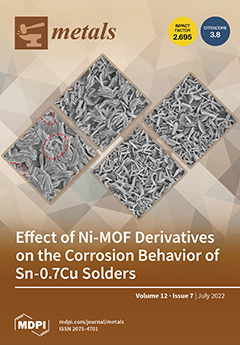The peripheral surface of the grinding wheel can grind the rail according to the envelope of the contour of the rail surface, thus a fuller and smoother rail surface can be obtained. Specifically, a better grinding effect can be obtained in that the
[...] Read more.
The peripheral surface of the grinding wheel can grind the rail according to the envelope of the contour of the rail surface, thus a fuller and smoother rail surface can be obtained. Specifically, a better grinding effect can be obtained in that the end face of the grinding wheel deviates from the longitudinal section of the rail at a certain angle. Based on the traditional grinding technology theory, the mathematical models of the peripheral grinding parameters (kinematic contact arc length, wheel-rail grinding contact area, and maximum undeformed chip thickness) and the grinding force are established, in which the angle exists between the grinding wheel end face and the rail longitudinal section. The main influence of grinding wheel circumferential speed, grinding wheel kinematic speed, and the deflection angle of the grinding wheel end face on the grinding parameters and the force are analyzed. The result shows that: when there is angle
θ in the models, the ratios of peripheral grinding parameters between up-grinding and down-grinding varies monotonically with the increase in
vm, and their maximum variation range is about 12%,
vs has the greatest influence on the peripheral grinding parameters, and the maximum variation range of the ratios is about 20% when the
vs is 10 m/s. With the increase in the grinding width,
Fa’ cannot be ignored and will increase gradually with the increase in angle
θ. The analysis and conclusion have guiding significance for the structural design, grinding control strategy, and experimental research regarding rail curved surface grinding equipment.
Full article





